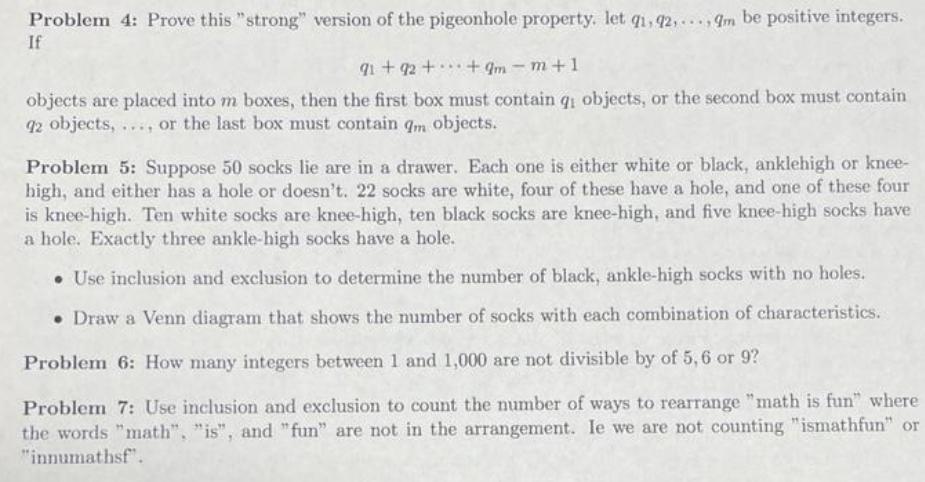Answered step by step
Verified Expert Solution
Question
1 Approved Answer
Problem 4: Prove this strong version of the pigeonhole property. let 9, 92,...,qm be positive integers. If 91 +92 + +9m-m+1 objects are placed

Problem 4: Prove this "strong" version of the pigeonhole property. let 9, 92,...,qm be positive integers. If 91 +92 + +9m-m+1 objects are placed into m boxes, then the first box must contain q: objects, or the second box must contain 92 objects, ..., or the last box must contain qm objects. Problem 5: Suppose 50 socks lie are in a drawer. Each one is either white or black, anklehigh or knee- high, and either has a hole or doesn't. 22 socks are white, four of these have a hole, and one of these four is knee-high. Ten white socks are knee-high, ten black socks are knee-high, and five knee-high socks have a hole. Exactly three ankle-high socks have a hole. Use inclusion and exclusion to determine the number of black, ankle-high socks with no holes. Draw a Venn diagram that shows the number of socks with each combination of characteristics. Problem 6: How many integers between 1 and 1,000 are not divisible by of 5, 6 or 9? Problem 7: Use inclusion and exclusion to count the number of ways to rearrange "math is fun" where the words "math", "is", and "fun" are not in the arrangement. le we are not counting "ismathfun" or "innumathsf".
Step by Step Solution
★★★★★
3.42 Rating (158 Votes )
There are 3 Steps involved in it
Step: 1
Problem 4 To prove the strong version of the pigeonhole property we can use contradiction Suppose that none of the m boxes contains q1 q2 or qm objects Then the first box must contain at most q11 obje...
Get Instant Access to Expert-Tailored Solutions
See step-by-step solutions with expert insights and AI powered tools for academic success
Step: 2

Step: 3

Ace Your Homework with AI
Get the answers you need in no time with our AI-driven, step-by-step assistance
Get Started


